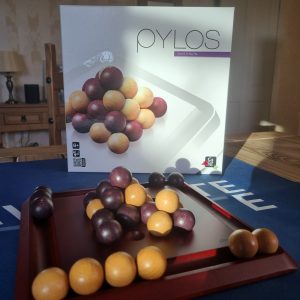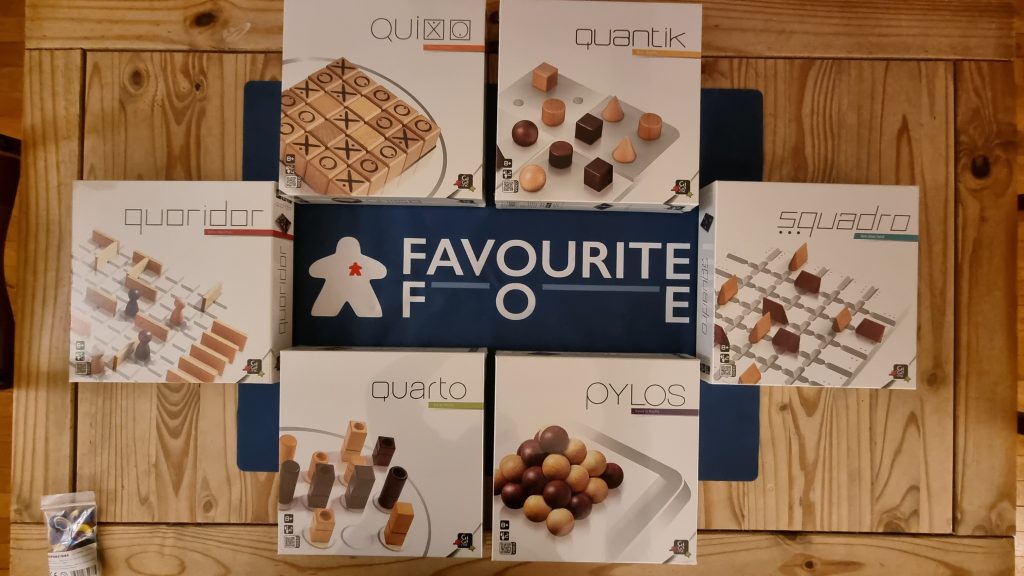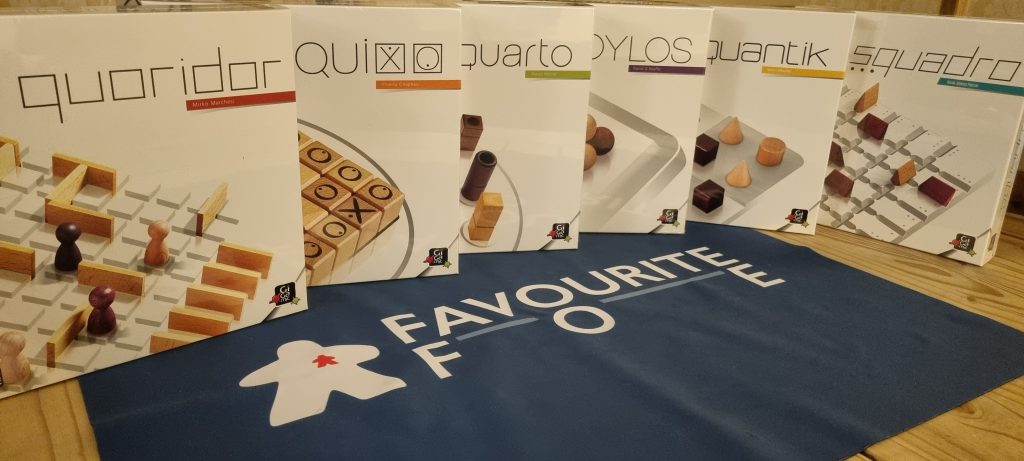The pyramids of Egypt may be bigger, but Gigamic’s Pylos is a treat for the eye and mind! No sand in the strategy here, it’s Play.Move.Save.Win!
Publisher: Gigamic Hachette Board Games UK
Designer: David G. Royffe
Artist: N/A
Release date: 1993 (re-released 2021)
2 Players
Age: 8+
10 mins
Favouritefoefunlearning score 8/10
*2 Player * Strategic * Simple Rules * Wooden Game * Abstract * Logic * Prediction/Anticipation * * Pattern Building * 3D *
Pretty Pyramids!
Nope, this is not a geography lesson. Mini-meeple and I dived into what we thought would be an easy dexterity racing game. Build the pyramid and be the first player to reach the top with your coloured piece. Simple, right? Wrong!
Yes there is dexterity in it. Picking and placing gorgeously glossy wooden spheres does take a certain finesse. But Pylos is built on a solid foundation of abstract, spatial thinkiness!
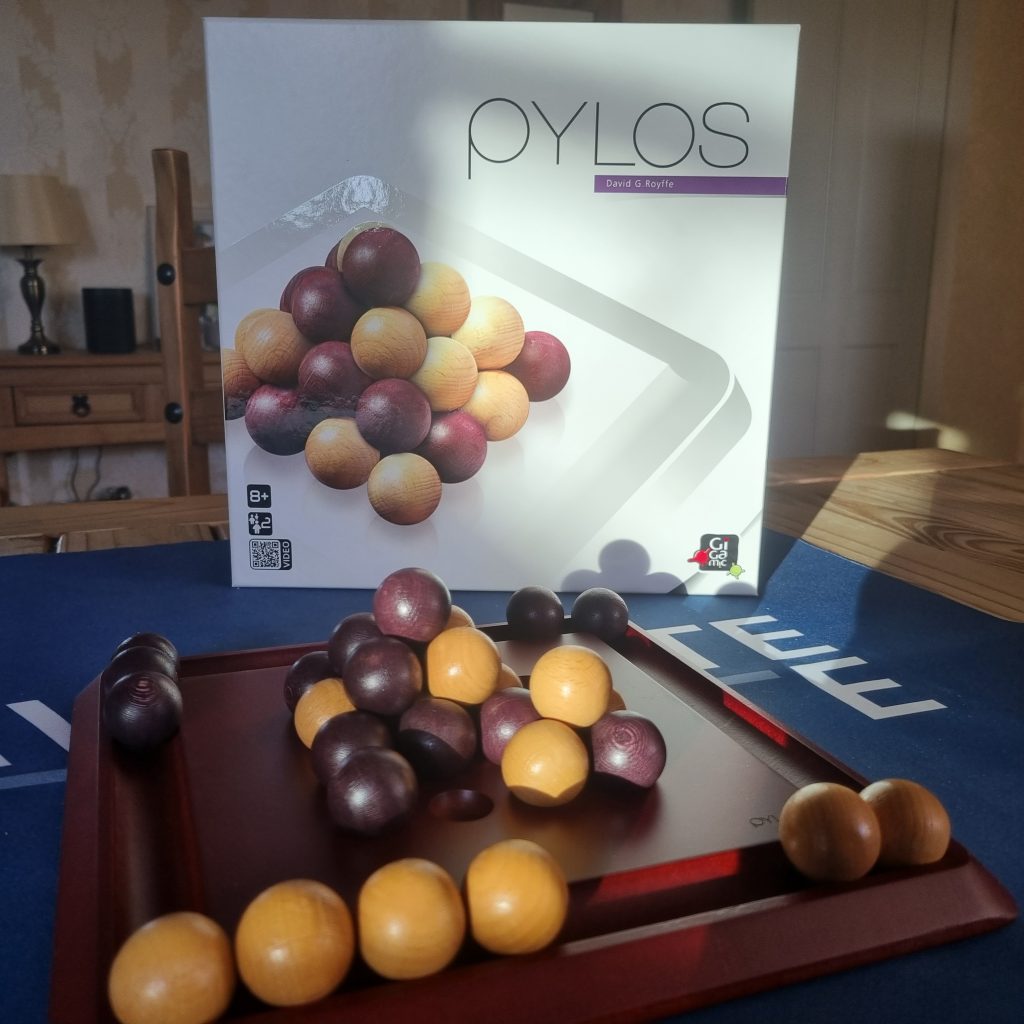
Set Up!
After the gorgeous dimpled wooden board emerges from the box, each player lines up their 15 spheres (light wood or dark wood) on one of the grooves on the outer edge (“the reserve”). And that’s it. 20 seconds to pile off!
And with a pyramid requiring 30 spheres to complete, you can see where this is going!
Pile Em’ Up!
The rules, as with all of the games in Gigamic’s wonderfully tactile abstract series, are very simple to learn.
On your turn, you can either:
- place a sphere from your reserve on to a free space on the board;
- If there is a 2×2 square of any colour combination already on the board, you can place it on top of that (and form “a stack”); or
- Move one of your existing (unsupported spheres) from somewhere on the board onto an existing stack, or move it to somewhere to form a new 2×2 square (i.e. the base of another stack).
Now, if you choose (c) and the sphere you place forms a 2×2 square of your own colour pieces, you can then remove one or two of your freestanding placed spheres back to your reserve. And believe me, you are going to want to do this – if you run out of pieces at any point, it’s an instant KO!
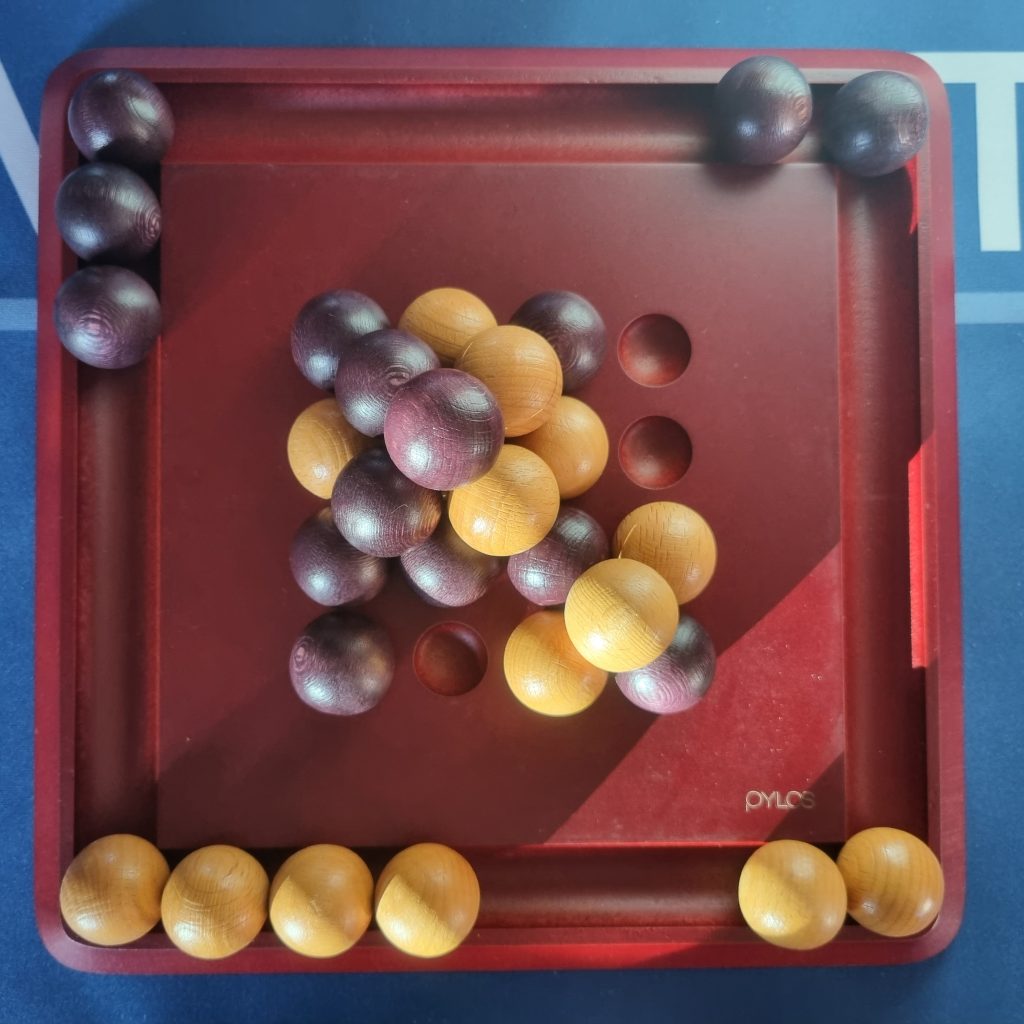
Pyraminds!
You might not think it from the brief rules or 10 minute playtime, but this is a clever little game. You see, you will never have enough pieces to play a straight build to the top. So you have to start triggering combination moves. You need to be able to move spheres already in play around. You need them to make squares of your own colour. You need to bring some of your pieces back to the reserve! And if you’re smart about it, that’s precisely what you can do.
But of course that is also what your opponent is doing. You can’t ignore them. You need to block them in or force them into a trap that lets you spring your sphere up a level higher. And, as you can’t move their pieces, your own moves have to meddle with their best laid plans!
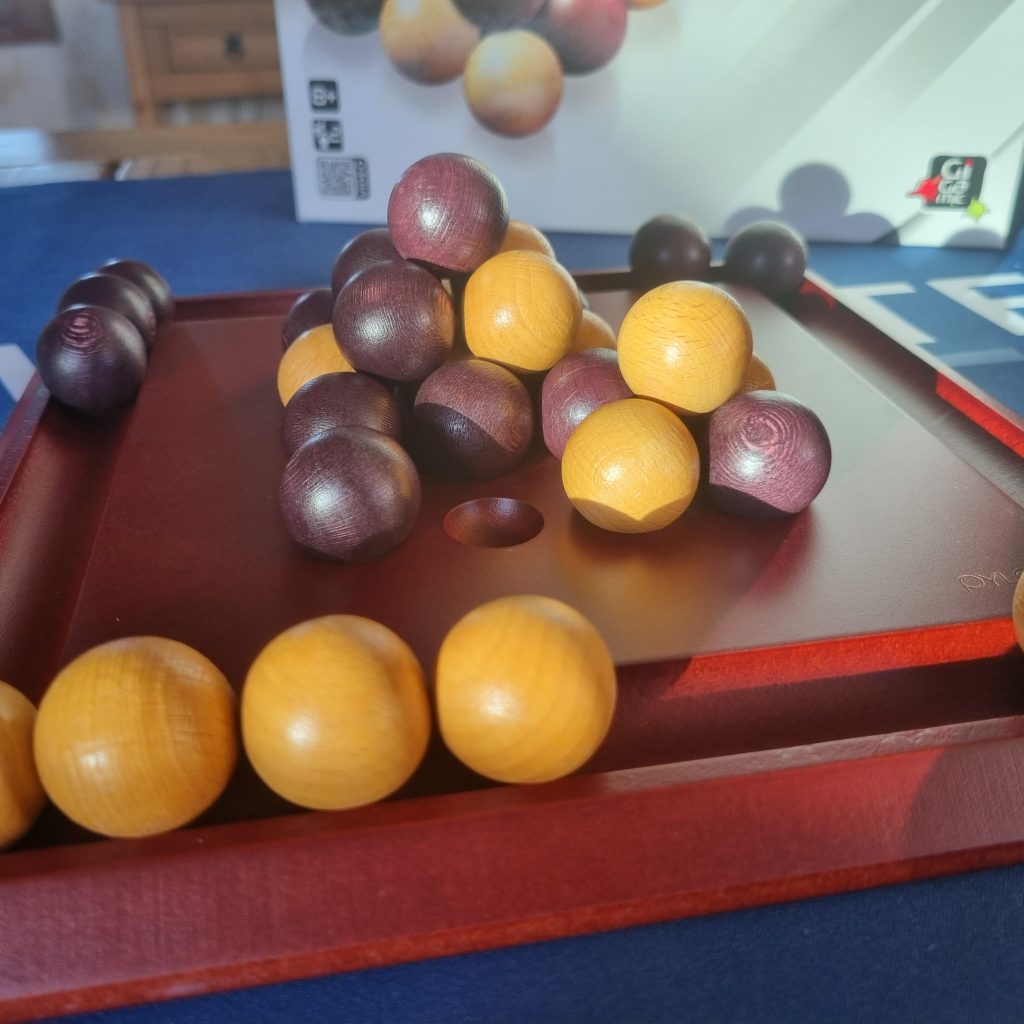
Simplified Strategy and Professional Pyramids!
Mini-meeple got the idea of this game pretty quickly, but the subtlety of the strategy when it comes to saving spheres is a little too advanced for him right now. He ran out of pieces in his first few games, but this was a good opportunity for us to analyse the space and see what he could have done to move his existing pieces or stop me from advancing up (always his preferred motivation! Haha).
Luckily, however, Gigamic has already thought about this. They have included a variation to the rules that gives younger (or less experienced) players less to think about each turn. By removing the bonus that get’s triggered when making a 2 x 2 square of your own colour pieces, the focus shifts on relocating spheres already in play to higher levels, thereby keeping your reserve fuller.
Not only that, but they have also prepared an excellent educational resource sheet (downloadable directly from their site here or at the bottom of this review) that uses Pylos in a fun #learningthroughplay way (as well as walking them through their first few games). When we started working through these, Pylos and its possibilities opened up massively for him. Taking each element of the game in turn, he was better able to translate what he was learning in the space.
Not only that but there is an expert variant (for the ShadowMeepleMedias of the gaming world!) that offers another sphere saving opportunity whenever a line of their own colour gets created.
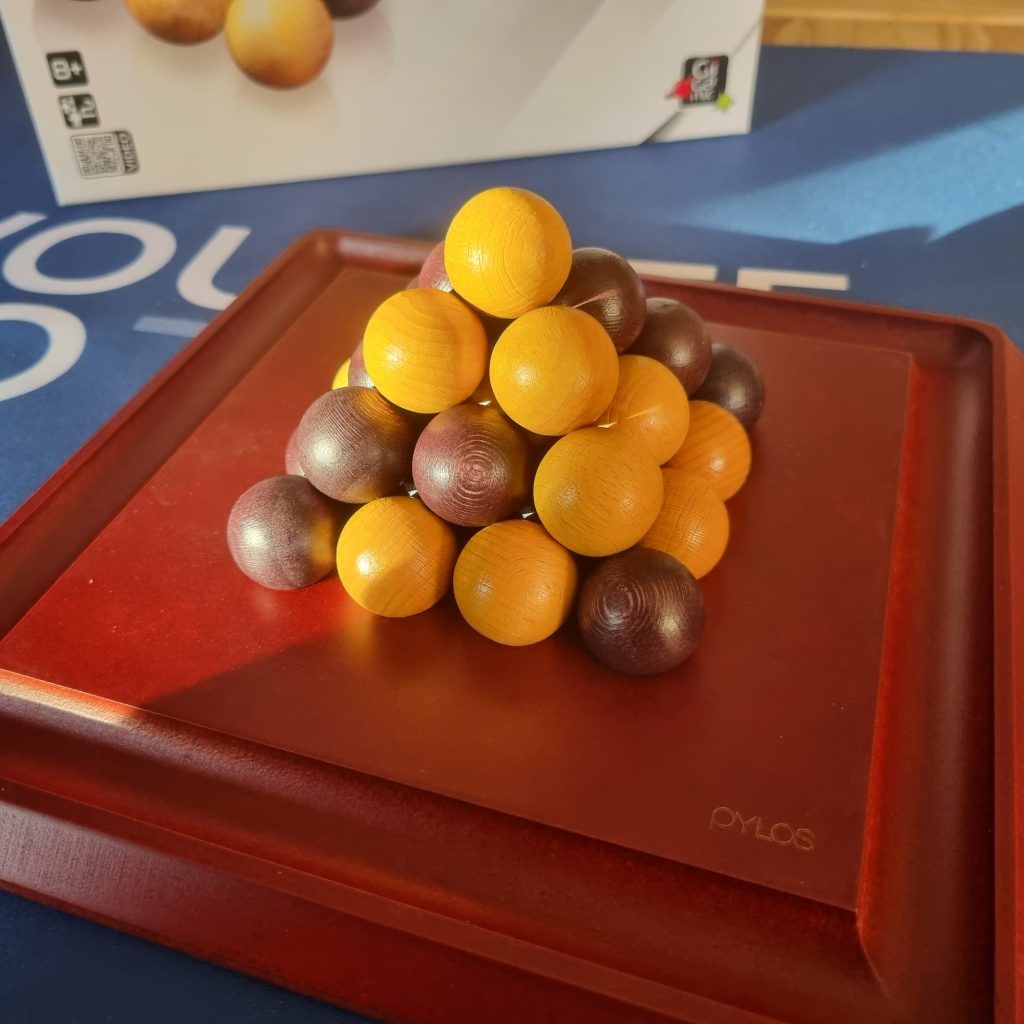
Final thoughts!
Pylos is a beautiful game to behold. It is functional sculpture. Art with which you can play. The components are extremely high quality, and in abstract games where bells and whistles are lacking, that is an important element. I hold the spheres and roll them around my hand when thinking.
Its thinkiness also belies its speed. I go to place a sphere and then pull back, reconsidering my move. The dynamic game space means that the baseline is always changing. Something I thought would get me a bonus removal is now no longer available. But perhaps I can go up a level as a result. As with all things spatial, ShadowMeepleMedia excels, and I am left puzzling in his wake, and so my loss stats are woeful for Pylos. But I honestly don’t mind. Because even when I don’t win, I am still learning. I am still building a beautiful thing!
I’m looking forward to seeing Mini-Meeple take on his daddy in this game as his skills develop. Gigamic themselves refer to Pylos as “Place.Move.Save”. And for us, this is definitely a game to save into the #favouritefoefunlearning series.
If you like the sound of Pylos check out my reviews of the other titles in the Gigamic Abstract Strategy Collection (including Squadro, Quoridor and Quixo and Quarto) , or click here to go to my feature overview of them all!
[Please note that a copy of this game was kindly provided by the publishers for review. I am not paid for my comments, however, and all opinions are my own]. I am also not affiliated to or sponsored by any retail store.


